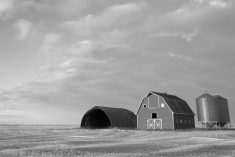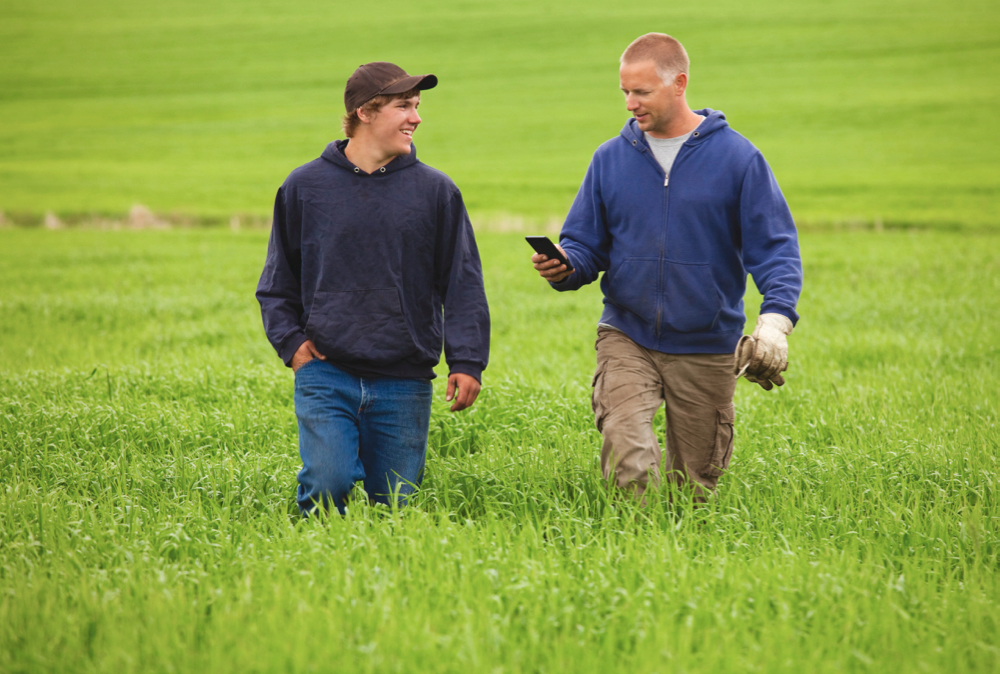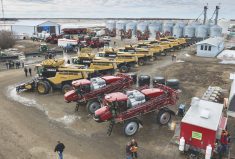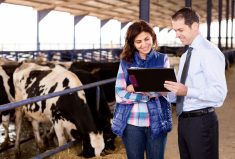Again this winter, ownership of farmland is a heated topic in coffee shops across rural Canada. Rumours abound. Sometimes, it’s foreign buyers who are said to be gobbling up huge chunks of prime farmland, paying prices that Canadian farmers can’t afford. Other times, it’s pension funds or rich non-farm investors.
Whoever tells the stories, the non-farm buyers seem to be everywhere. And in most accounts, they’re definitely the bad guys.
But is third-party ownership of farmland actually as big a problem as the coffee shop talk paints it?
Read Also

Riding the tariff rollercoaster
Farmers are accustomed to roller-coaster years. But the current geopolitical windstorm is something else entirely. On his cattle operation near…
The answer is maybe yes. Or maybe no. We just don’t know, which may in itself be a real problem.
Two big challenges get in our way right away. First, regulation of land ownership falls under provincial regulation, and it varies across Canada. That means non-farmer ownership could well be an issue in some provinces and not in others.
In November 2013, Garth Anderson, a partner in the Calgary office of the international law firm Blake, Cassels & Graydon LLP, put together the one-page overview below, comparing provincial regulation of farmland ownership across Canada. It reveals a wide range, from the hands-off policies of Ontario, Nova Scotia, and New Brunswick to the extremely restrictive laws of Prince Edward Island.
Even in the Prairie provinces, where farmland ownership is relatively restricted, there are exemptions which ease some of those restrictions. For example, Saskatchewan considers a person to be a resident for the purpose of owning land if they reside in Canada at least 183 days a year.
Saskatchewan also provides an exemption for non-Canadian residents if they intend to move to the province and actually farm, and next door in Alberta, there are exemptions too if the sale “will be of economic benefit to the province of Alberta.”
Alberta legislation also allows foreigners to lease farmland for up to 20 years, and even where residency is required, purchasers need only provide a statutory declaration of their residency in order to purchase farmland.
How much Canadian farmland is foreign owned?
A second problem is that no one is actively tracking foreign ownership of farmland in Canada.
While land title offices in all provinces record ownership information on all land transactions, they do not track citizenship or residency. To come up with an accurate assessment of who owns land would require the individual examination of every land title.
However, because of the importance of knowing who owns farmland, a few researchers are attempting to do this examination to get an estimate of ownership.
At the University of Guelph, ag economist Alfons Weersink has co-authored the study “An Empirical Examination of Landowner Characteristics, Social Capital, and Farmland Rental Rates in Southern Ontario.” The authors surveyed 240 farmers in southern Ontario in 2010 to determine the impact of land ownership on rental rates.
They found in 2010, 65 per cent of Ontario farmland was owned by the actual farmer. Of the rented land, roughly 70 per cent was owned by retired farmers, widowers, families living on the land, or by active farmers who were renting some of their land to another farmer.
However, almost one-quarter of the rental land was owned by investors (16 per cent) and investment companies (eight per cent).
The researchers also found three per cent of the owners of rental land were foreigners living outside Canada.
Weersink wasn’t aware of other economists working on foreign ownership when he did that research. “Ownership of farmland is very difficult to track,” he points out. Overall, however, his thinking is that “foreign ownership is perceived to be a bigger problem than it is.”
More recently André Magnan at the University of Regina, collaborated with other researchers to study the issue. (Editors Note: The study by Magnam in collaboration with Annette Desmarais, University of Manitoba, and Darrin Qualman and Nettie Wiebe from the University of Saskatchewan is titled “Land grabbing and land concentration: Mapping changing patterns of farmland ownership in three rural municipalities in Saskatchewan, Canada” and is in press for the January 2015 issue of Canadian Food Studies.)
This study attempts to track the changing pattern of farmland ownership and the impact such changes have on agriculture and rural communities, although the researchers faced the same obstacle, Magnan says. “We found no agency keeps track of this in Canada. We are the first to analyze investor ownership.”
The study provides a detailed breakdown of the ownership of farmland in three rural municipalities in Saskatchewan where initial research had identified there was significant change occurring in ownership patterns.
In those three RMs, they found non-farming investors or funds now own between 7.8 per cent and 13.1 per cent of the land.
Magnan’s group also noted the consolidation of land ownership by big producers. In one municipality, just four farm operations made up of a mix of actual farmers and investors now own 28 per cent of the farmland.
The study also found the pace of outside ownership of land is speeding up. Most of the change in ownership patterns in Saskatchewan has happened in the past 10 years, occurring after land ownership laws in the province were relaxed. Increasing farm size by big producers has accelerated over the past seven or eight years, Magnan adds: “Ownership patterns are changing quickly and on a fairly large scale.”
This study raises a number of questions which Magnan says requires further study. He believes we need to determine the potential impacts of ownership pattern change both on family farms and on rural communities. Study is needed on the social, economic, environmental, and sustainability impact of investor ownership too, Magnan says, and he adds that we need to know how this will have an impact on the entry of young people into agriculture.
Are lenders enablers of investor ownership?
Many farmers are also critical of agricultural lending policies which they feel readily lend money to private investment funds, enabling investors to leverage invested funds into even larger land purchases. Interestingly, Corinna Mitchell-Beaudin, executive vice-president and chief risk officer with Farm Credit Canada, says FCC stopped loaning money to large investors and pension funds a couple of years ago.
“We no longer lend to large funds which intend to purchase farmland for the purpose of renting it out,” says Mitchell-Beaudin. “FCC decided in today’s vibrant ag economy, there was no longer a need for FCC support of large investor funds.”
An area the size of France
In November 2013, Country Guide first told readers about landmatrix.org, a crowd-sourcing website that tracks transnational purchases of farmland in low- and middle-income countries. One year ago this website, tracked by the author, had information on 851 international land deals covering some 75 million acres.
As of December 21, 2014, it is now tracking 1,029 concluded land deals with another 195 intended deals. If all of these intended deals are completed, the amount of land owned by foreign investors, funds, and foreign governments being tracked by this website will have nearly doubled in one year to 137.6 million acres.
Not included on this site is the intention of the Democratic Republic of Congo to lease up to 640,000 square kilometres (247,000 square miles) of cultivatable farmland to private investors in the hopes the investors will modernize farming practices in Congo as well as build needed infrastructure. This offer was first reported in the Wall Street Journal on October 28, 2014, and was described as leasing an area of land larger than France. WSJ also reported a South African Company has already leased and will plant corn on 24,710 acres by the end of January 2015.
What it all means for farmland prices
University of Victoria graduate student Peter Bell is studying the impact of foreign ownership on the competitiveness and sovereignty of Canadian farming. In a 2012 paper, he argues that the 2011 price of farmland was 73 per cent lower in Saskatchewan than it would have been if foreigners had been able to purchase Saskatchewan farmland.
While the average price of land in 2011 in Saskatchewan was $584 per acre, he calculated the additional competition from more buyers would have pushed that average to $1,015 per acre.
Bell wonders if this underpricing of Saskatchewan land due to ownership laws was a contributing factor to the growth of farmland investment funds.
Higher land prices are a double-edged sword. While higher prices are a benefit to farmers seeking to exit the industry, it also makes it more difficult for young people to begin farming.

















